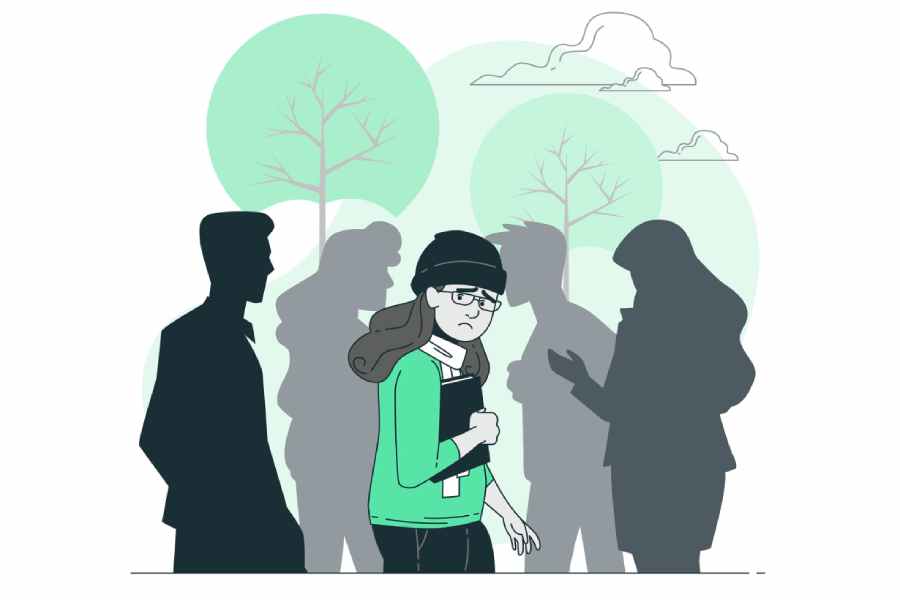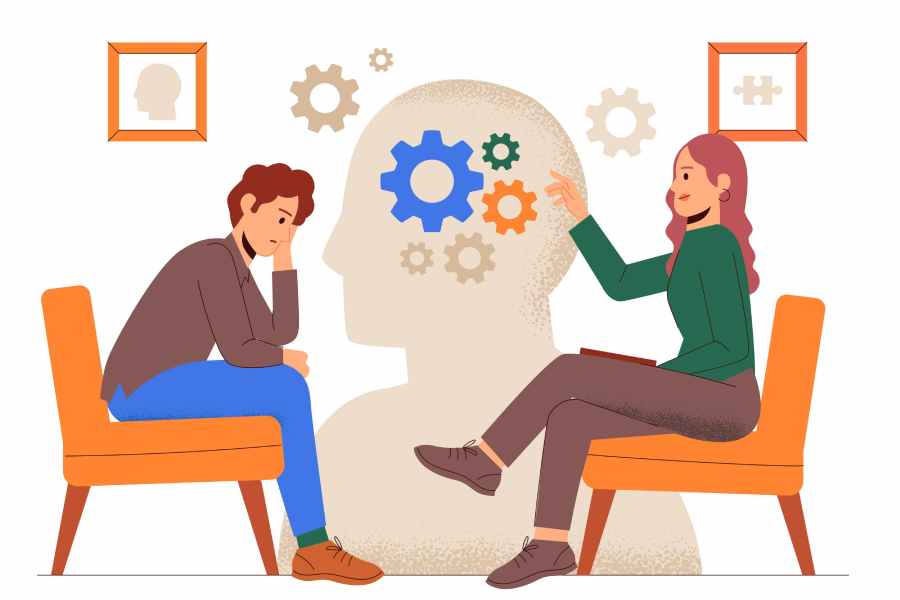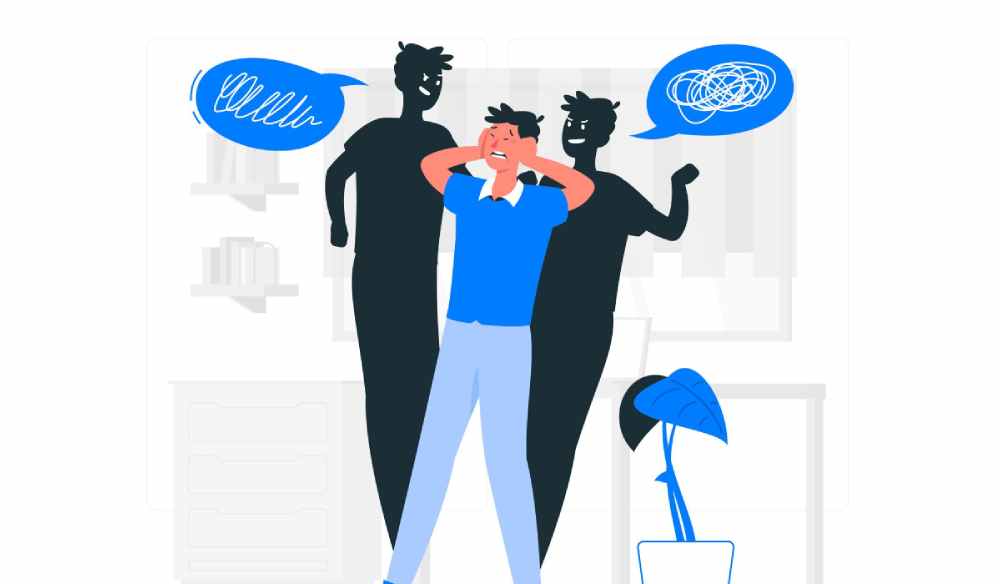Introduction
The term “psychosis,” which is derived from the Greek word for the abnormal condition of the mind, has been used in many different ways in clinical medicine. Before 1980, the term “psychotic” was applied generically to persons whose mental functioning was sufficiently impaired to interfere with their day-to-day functioning. Previously any behavior that deviated from societal standards was considered ‘abnormal’ and thus psychotic. (W Janzarik, 2003)
Starting in 1980 with the publication of the third edition of the Diagnostic and Statistical Manual of Mental Disorders (DSM-III), the term indicated gross impairment in reality testing — that is, disruption of the ability to distinguish between the internal experience of the mind and the external reality of the environment (Lieberman et al, 2018)
Psychotic disorders are a group of serious concerns that affect the mind. They make it hard for someone to think clearly, make good judgments, respond emotionally, communicate effectively, understand reality, and behave appropriately.
When symptoms are severe, people with psychotic disorders have trouble staying in touch with reality and often are unable to handle daily life. But even severe psychotic disorders usually can be managed with timely, long-term professional help.
Here are a few areas we will discuss about
- Definition
- Disorders that fall into the Psychotic Spectrum Disorders
- Factors that give rise to these disorders
- Treatment
- Role of Family and Social Group
Definition of psychosis
The term “psychosis,” first used by Canstatt and then by von Feuchtersleben, originally meant “psychic neurosis,” one of several forms of one disease group. The term was taken up by Flemming and introduced among other typical indications such as psychic disturbance, around 1875 (Janzarik W,2003).
Psychosis is a common and significantly disruptive symptom found in various psychiatric, neurodevelopmental, neurological, and medical disorders. It is a crucial focus for assessment and intervention in both neurological and psychiatric healthcare. Psychosis is the defining feature of schizophrenia spectrum disorders and also a relatively common feature of many developmental, acquired, and degenerative neurological and medical conditions. (Arciniegas DB, 2015)
Disorders that fall into the Psychotic Disorder Spectrum
(Lieberman et. Al, 2018)

1. Schizophrenia
Schizophrenia is a chronic, severe mental disorder that affects the way a person thinks, acts, perceives reality, and relates to others. People with Schizophrenia often lose touch with reality. Hallucinations of various sensory modalities and delusional thoughts are some of the symptoms although the severity of this disorder varies from person to person.
The discovery of schizophrenia is attributed to the German psychiatrist Emil Kraepelin, who first described the condition in the late 1800s. He observed patients with symptoms such as delusions, hallucinations, and disorganized thinking, which he believed were caused by an underlying brain disease.
2. Delusional Disorder
Delusions are unshakable beliefs in something that isn’t true or based on reality. Delusions usually involve mistaken perceptions or experiences. Delusional thoughts could include suspicion, having supernatural abilities, beliefs that they are being persecuted, etc.
3. Schizoaffective Disorder
It is a condition in which the subject suffers all the symptoms related to schizophrenia in addition to the symptoms specific to mood disorders, mania, and depression. Due to the overlap between symptoms, schizoaffective disorder needs to be diagnosed with caution. But, if not treated properly it can have a huge impact on his/her daily life.
4. Paranoid Personality Disorder
It is a personality disorder characterized by distrust, doubt, and suspicion that leads to the interpretation that other people’s motivations as wrong or harmful to themselves or the people they love. Individuals with this personality structure have rigid and pervasive ways of thinking, they often live in fear of harm, and fear of being betrayed by loved ones. Individuals with these concerns require timely and long-term care by trained professionals.
5. Schizoid Personality Disorder
A main trait of this disorder is the lack of the desire for close relationships with others/ the need for emotional detachment. A person with schizoid personality traits may exhibit a diminished capacity for experiencing joy or enthusiasm, reduced levels of anxiety or fear, and a heightened tolerance compared to the average person. People with Schizoid personality disorder are however fully aware of the realities, even though they don’t participate. This disorder does not affect logical cognitive abilities.
6. Schizotypal Personality Disorder
It is a personality disorder characterized by a tendency towards social isolation, vague communication, usual ideas or beliefs, and mild paranoid ideation. The patients have a typical way of thinking and dressing but the perception of reality is not seriously altered. Traumatic events and brain injury might give rise to this disorder.
What are the factors that give rise to these disorders?
1. Genetic Factors
Estimates of heredity vary due to the difficulty of separating the effects of genetics from those of the environment. The highest risk of developing schizophrenia is in the presence of a first-degree relative with the disease.
2. Environmental Factors
Studies have shown that living in an urbanized environment, during childhood or adulthood, is related to a double risk of developing schizophrenia, even taking into account drug use, ethnic group, and social group size. Other factors that play a very important role are social isolation and social hardship, family problems, etc.
3. Drug and Alcohol use
Studies have shown a direct correlation between the onset of schizophrenia and the use of drugs. It has been noted that patients with schizophrenia have a greater tendency to use nicotine than the general population.
4. Psychophysical Development
The risk of developing schizophrenia increases slightly if the pregnant mother experiences difficulties such as infection, stress, and malnutrition during fetal development.
5. Psychological factors
The presence of trauma such as childhood trauma (e.g. abuse, neglect), and attachment issues further increases the risk of developing schizophrenia as these events negatively affect their worldview and can give rise to maladaptive coping mechanisms and cognitive biases. Various cognitive biases have been identified in patients diagnosed with schizophrenia or in individuals at risk, especially when they are under stress or in confused situations.
6. Neurobiological Factors
The differences in the frontal lobes, hippocampus, and temporal lobes in the brain are linked to neurocognitive deficits and are often associated with schizophrenia.

Antipsychotic medicines are usually recommended as the first line of treatment for psychosis by most of the best psychotherapists in india. They work by blocking the effect of dopamine, a chemical that transmits messages in the brain.
Cognitive behavioral therapy (CBT) for psychosis is based on an understanding of how people make sense of their experiences and why some people become distressed by them.
A CBT therapist may encourage the patient to consider different ways of understanding what’s happening to them. The aim is to help them achieve goals that are meaningful and important to them, such as reducing distress, returning to work, education, or training, or regaining a sense of control.
Family intervention is known to be an effective form of therapy for people with psychosis. It’s a way of helping both the patient and their family cope with your condition.
In addition to medication and psychotherapy, rehabilitation can help individuals to engage better with the community, improve daily functioning, and develop some independence. The aim of rehabilitation is to build the confidence and skills so you can cope with your condition and become as independent as possible.
Also Read: Art Therapy For Mental Health
Role of Family and Social Groups

Psychoeducation
Family Psychoeducation refers to a group of structured psychotherapeutic interventions that involve the person with schizophrenia and their family as partners in care. Trained practitioners adopt a collaborative approach to information sharing and provide training in coping, communication, and problem-solving skills. (Cambridge University Press, 2018)
Basic support tips
When trying to engage with these individuals, meet them somewhere without distractions, to talk about their experience. How the person behaves will determine how you need to interact with them. Give them the space they need to feel comfortable and avoid touching them.
Listen and try to understand
It can help if your loved one feels they are able to discuss their feelings and opinions with someone who is supportive. Listen to their experiences and ask them what would help.
It’s hard to know how to respond when someone sees, hears, or believes something that you don’t. Instead of confirming or denying their experience, it can help to say something like “I understand that you see things that way, but it’s not like that for me”. It’s usually more helpful to focus on how the person is feeling about what they are experiencing.
Don’t blame them
It is not their fault that they are suffering from this disorder. Nobody wants that to happen to themselves. Kindly refrain from shaming, inducing guilt, or blaming them.
Family intervention
Family intervention can help the whole family understand what the person with psychosis is going through and identify what is helpful and unhelpful for them and for you. (Richard L. Leavy,1983)
References
Janzarik W. Der Psychose-Begriff und die Qualität des Psychotischen [The concept of psychosis and psychotic qualities]. Nervenarzt. 2003 Jan;74(1):3-11. German. doi: 10.1007/s00115-002-1348-6. PMID: 12596022.
Jeffrey A. Lieberman, M.D., and Michael B. First, M.D Psychotic Disorders N Engl J Med 2018;379:270-80. DOI: 10.1056/NEJMra1801490
Family Psychoeducation for people living with schizophrenia and Their Families Cambridge University Press,2018
Social support and psychological disorder: A review Richard L. Leavy
First published: January 1983
https://doi.org/10.1002/1520-6629(198301)11:1<3::AID-JCOP2290110102>3.0.CO;2-E
Citations: 289
Arciniegas DB. Psychosis. Continuum (Minneap Minn). 2015 Jun;21(3 Behavioral Neurology and Neuropsychiatry):715-36. doi: 10.1212/01.CON.0000466662.89908.e7. PMID: 26039850; PMCID: PMC4455840.

